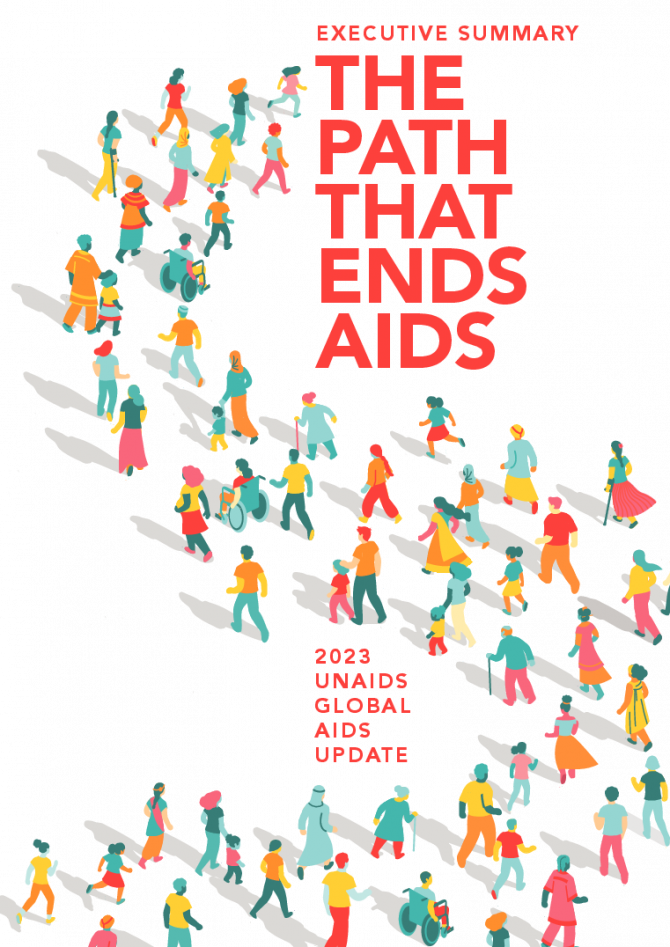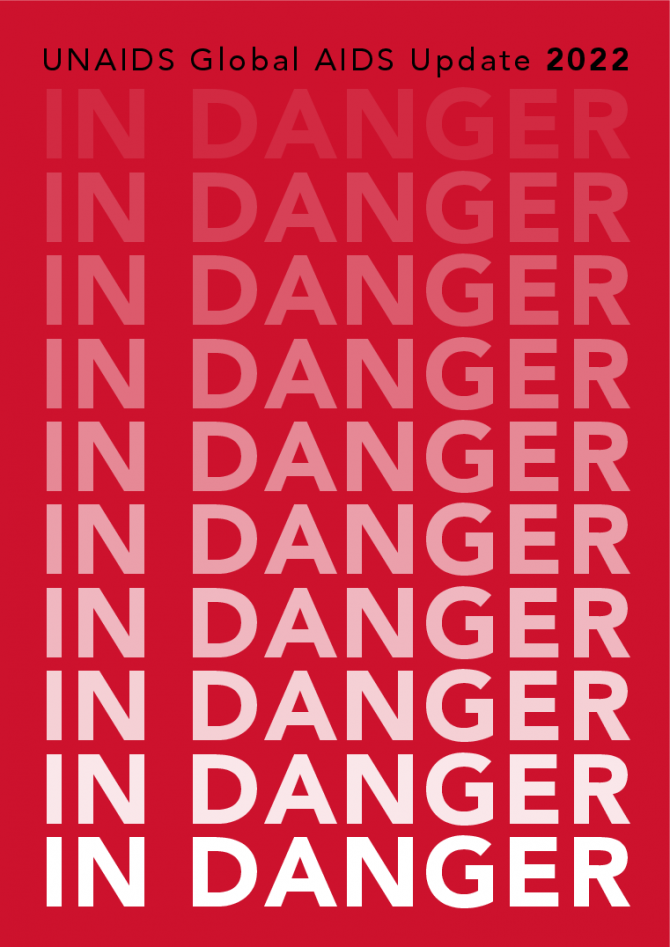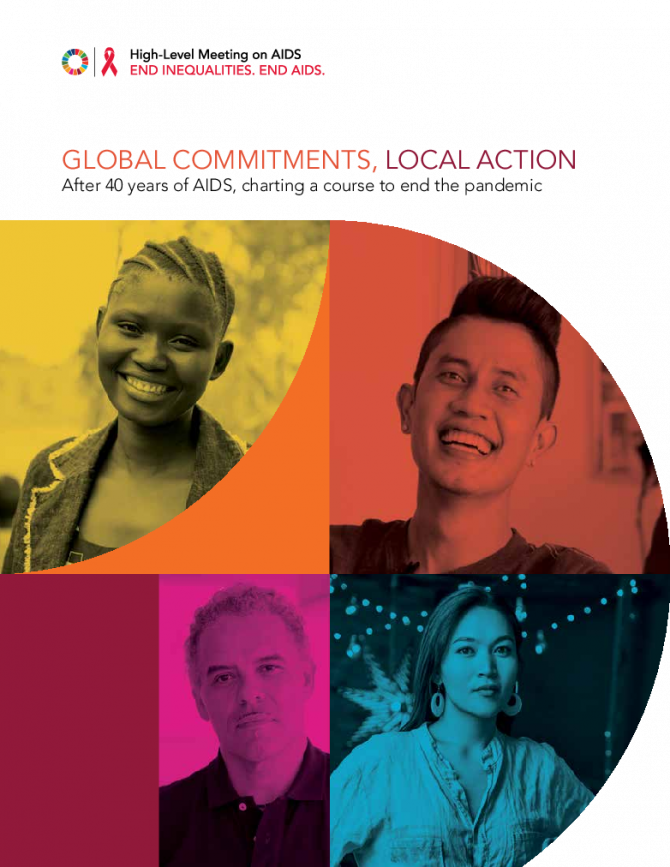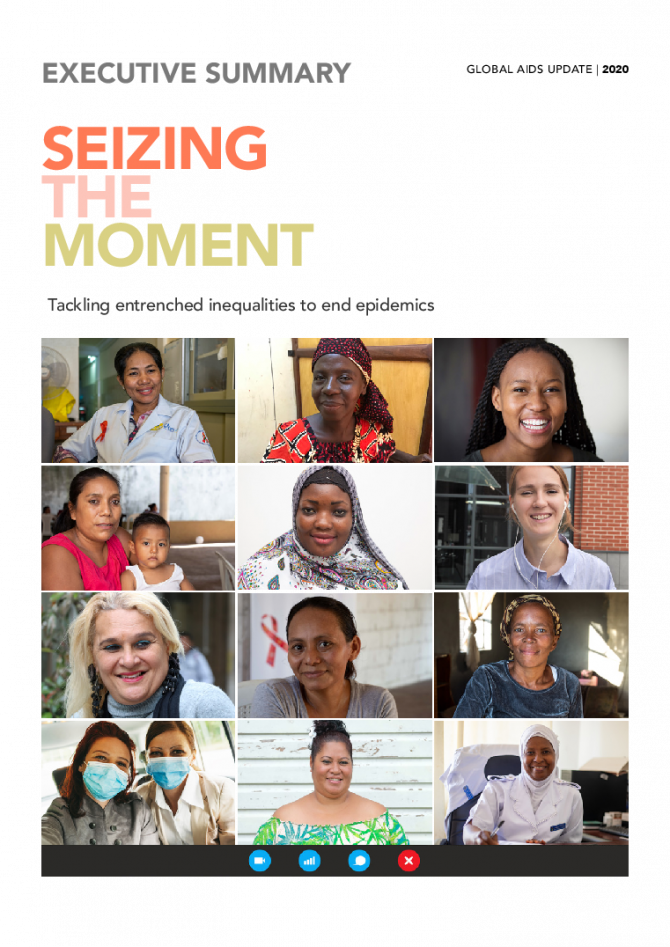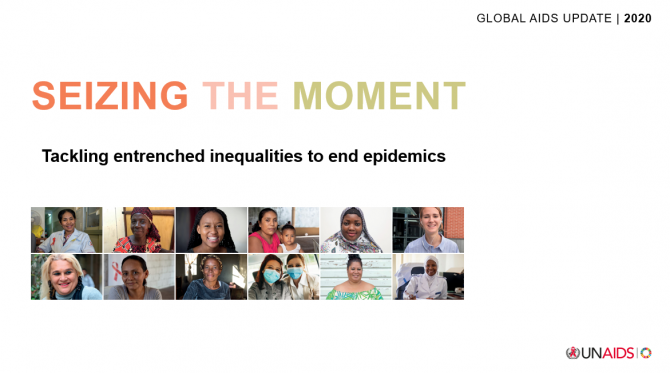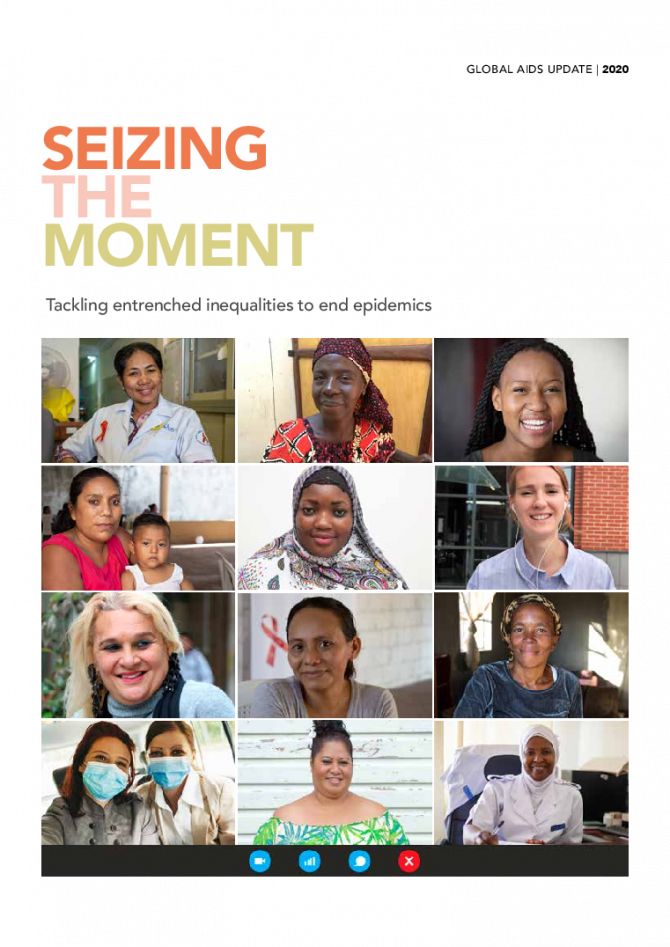Documents
Executive summary — The path that ends AIDS: UNAIDS Global AIDS Update 2023
13 July 2023
This report makes clear that there is a path to end AIDS. Taking that path will help ensure preparedness to address other pandemic challenges, and advance progress across the Sustainable Development Goals. The data and real-world examples in the report make it very clear what that path is. It is not a mystery. It is a choice. Some leaders are already following the path—and succeeding. It is inspiring to note that Botswana, Eswatini, Rwanda, the United Republic of Tanzania and Zimbabwe have already achieved the 95–95–95 targets, and at least 16 other countries (including eight in sub-Saharan Africa) are close to doing so. Also available: Additional resources (regional and thematic factsheets) | Annex 1: Progress towards the 2025 targets | Annex 2: Methods | Slide set | Press release | Microsite
Documents
The path that ends AIDS: UNAIDS Global AIDS Update 2023
13 July 2023
The 2024 global AIDS report The Urgency of Now: AIDS at a Crossroads, released 22 July 2024, is available here.
This report makes clear that there is a path to end AIDS. Taking that path will help ensure preparedness to address other pandemic challenges, and advance progress across the Sustainable Development Goals. The data and real-world examples in the report make it very clear what that path is. It is not a mystery. It is a choice. Some leaders are already following the path—and succeeding. It is inspiring to note that Botswana, Eswatini, Rwanda, the United Republic of Tanzania and Zimbabwe have already achieved the 95–95–95 targets, and at least 16 other countries (including eight in sub-Saharan Africa) are close to doing so. Also available: Additional resources (regional and thematic factsheets) | Annex 1: Progress towards the 2025 targets | Annex 2: Methods | Slide set | Press release | Microsite
Documents
Full report — In Danger: UNAIDS Global AIDS Update 2022
27 July 2022
The 2024 global AIDS report The Urgency of Now: AIDS at a Crossroads, released 22 July 2024, is available here.
Progress in prevention and treatment is faltering around the world, putting millions of people in grave danger. Eastern Europe and central Asia, Latin America, and the Middle East and North Africa have all seen increases in annual HIV infections over several years. In Asia and the Pacific, UNAIDS data now show new HIV infections are rising where they had been falling. Action to tackle the inequalities driving AIDS is urgently required to prevent millions of new HIV infections this decade and to end the AIDS pandemic. See also: Executive summary | Fact sheet | Epi slides | Microsite | Press release | Arabic
Documents
2021 UNAIDS Global AIDS Update — Confronting inequalities — Lessons for pandemic responses from 40 years of AIDS
14 July 2021
UNAIDS report shows that people living with HIV face a double jeopardy, HIV and COVID-19, while key populations and children continue to be left behind in access to HIV services. Read the press release | Data slides | This document is also available in Arabic
Documents
Global commitments, local action
03 June 2021
After 40 years of AIDS, charting a course to end the pandemic. Read press release
Documents
Graphs and tables slideset — Prevailing against pandemics by putting people at the centre — World AIDS Day report 2020
26 November 2020
Documents
Executive summary — 2020 Global AIDS Update — Seizing the moment — Tackling entrenched inequalities to end epidemics
07 July 2020
Documents
2020 Global AIDS Update — Seizing the moment — Tackling entrenched inequalities to end epidemics
06 July 2020
UNAIDS report on the global AIDS epidemic shows that 2020 targets will not be met because of deeply unequal success; COVID-19 risks blowing HIV progress way off course. Missed targets have resulted in 3.5 million more HIV infections and 820 000 more AIDS-related deaths since 2015 than if the world was on track to meet the 2020 targets. In addition, the response could be set back further, by 10 years or more, if the COVID-19 pandemic results in severe disruptions to HIV services.
Visit the special page to read this report interactively and access all related materials

